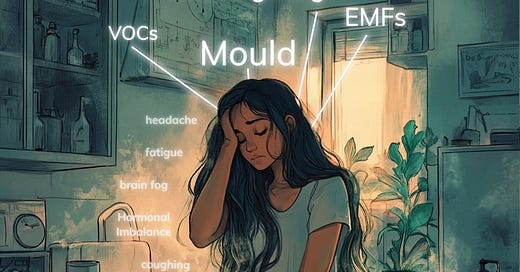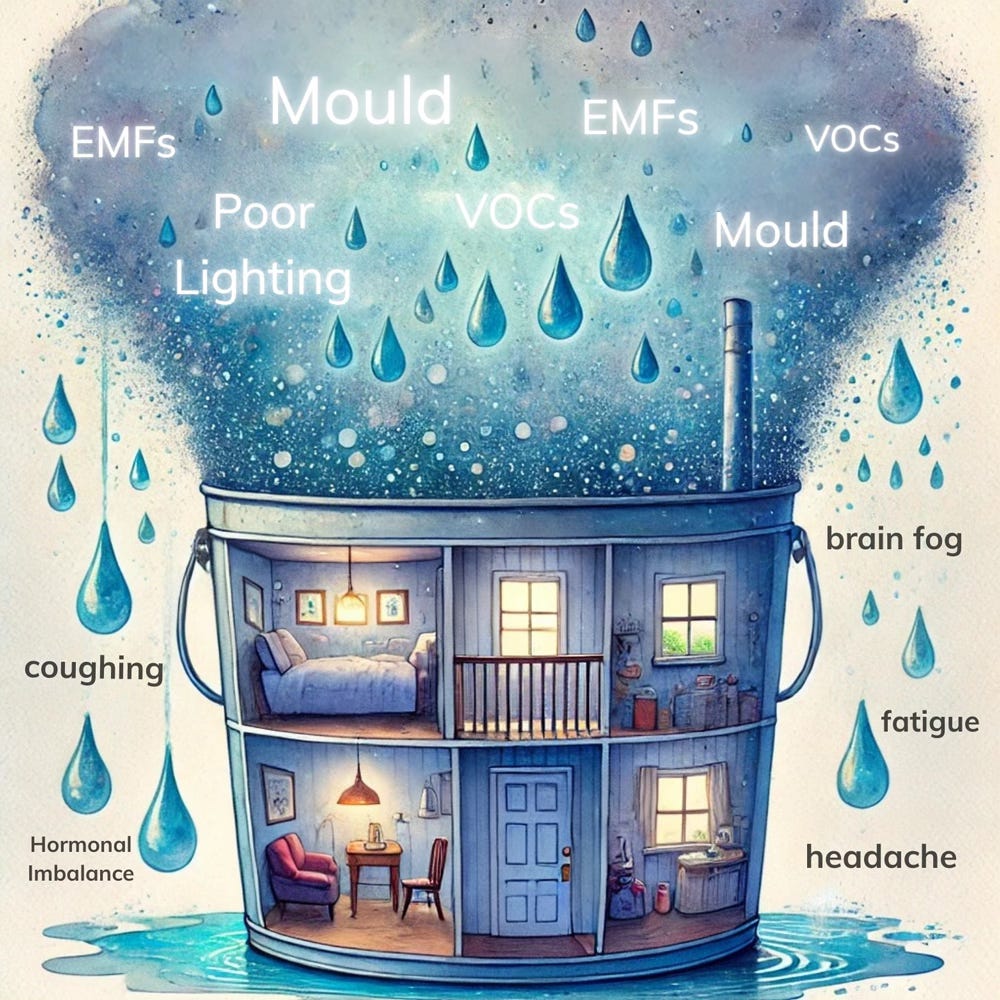I’ve been running a high-end residential interior design and construction company for years. My family has been in the industry for over 30 years, yet we’d never considered how the spaces we were creating could impact health.
When I started asking others in the industry, I saw a massive gap. Builders and designers were only focused on aesthetics—not how homes could enhance well-being.
This was my wake-up call.
I immersed myself in research, diving into Building Biology, biophilia, biohacking, and the science behind indoor health. The more I learned, the clearer it became: our homes can either support us—or destroy us.
The Rain Barrel Effect
One concept that really stuck with me is the rain barrel.
Imagine your body as a rain barrel, slowly filling with pollutants, toxins, and stressors from your environment. A little exposure here and there might seem harmless, but over time, the barrel fills up. And when it overflows? That’s when health issues like fatigue, chronic illness, inflammation or hormonal imbalances kick in.
The solution? Start emptying the barrel.
What’s in Your Home That Could Be Overflowing Your Barrel?
Air Quality
Indoor air is often 2–5 times more polluted than outdoor air, according to the EPA.
Pollutants include mould spores, VOCs (volatile organic compounds), and particulate matter from cleaning products, furniture, and construction materials.
Diseases linked to poor air quality: Asthma, bronchitis, Chronic sinusitis, fatigue, Cardiovascular conditions (including hypertension and stroke), Neurological diseases, (such as dementia and reduced cognitive function) and Lung cancer
Water Quality
Tap water often contains chlorine, heavy metals, and pharmaceutical residues.
Chlorine byproducts, such as trihalomethanes, are linked to cancer.
Bathing in contaminated water can irritate skin, disrupt hormones, and affect the respiratory system through vapour inhalation.
Lighting
Poor lighting disrupts circadian rhythms, contributing to insomnia, mood disorders, and reduced productivity.
Flicker in LED lighting—even if invisible—can cause headaches and eye strain.
Endocrine Disruptors
Chemicals like phthalates and BPA, found in plastics, cleaning products, and furniture, mimic hormones and disrupt the body’s natural balance.
Linked to fertility issues, PCOS, thyroid dysfunction, and developmental delays.
EMFs (Electromagnetic Fields)
Chronic exposure from Wi-Fi, smart devices, and electronics may contribute to poor sleep, fertility issues, increased stress, cancer and potential neurological impacts.
Mental Health and Productivity
Poor indoor environments increase stress, reduce focus, and impact creativity.
Studies, including Harvard’s Cognitive Function study, show that clean air and better-designed spaces improve cognitive performance by as much as 61%.
This isn’t just about toxins—it’s about how your home is affecting your brain, energy, and productivity every single day.
My own health journey showed me what it’s like when the rain barrel overflows—and I NEVER want to go back there. Making changes to my home was one of the biggest steps in taking back control.
As always grateful you are here but please subscribe and read my next post on ‘What You Can Do to Create a Healthier Home’
In the meantime, if you would like to know more about my story go back and read my last post:
My Home Was Making Me Sick—And I Had No Idea
Most of us spend about 90% of our time indoors. When we think about health, we obsess over food, exercise, or supplements. Think about it, what do you focus on when you think about those things?








I love this post!!! Great job Shreya...